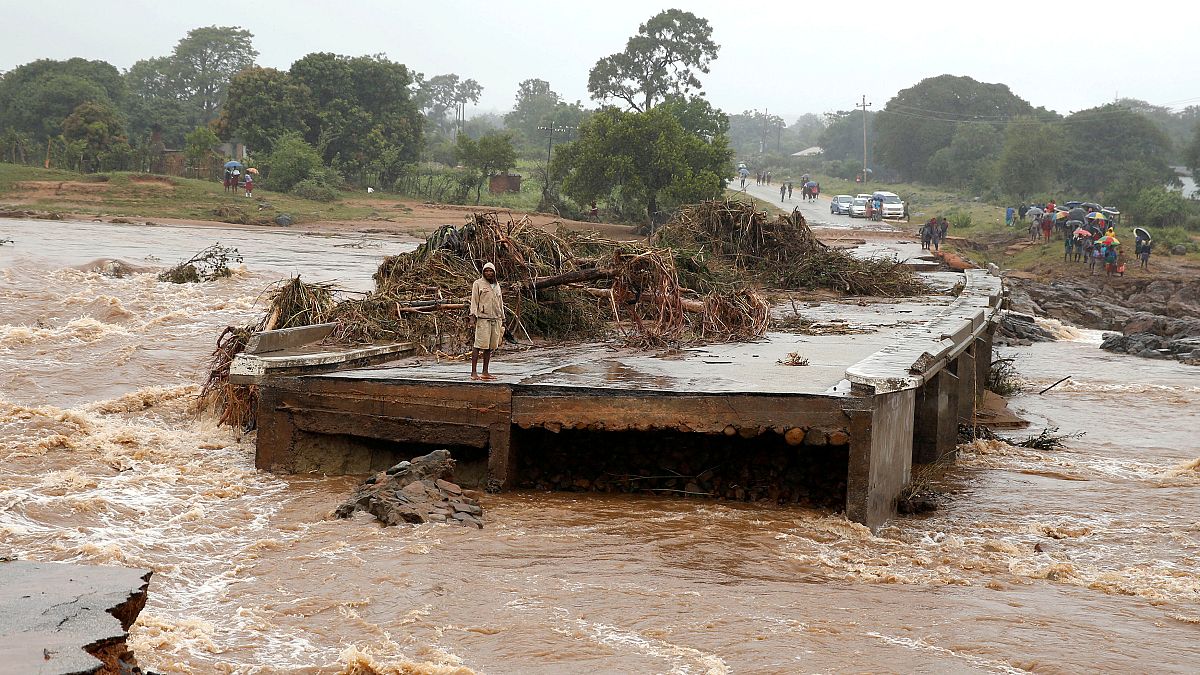Tropical Cyclone
What is a Tropical Cyclone?
A tropical cyclone is a rapidly rotating storm system characterized by a low-pressure center, strong winds, and thunderstorms that produce heavy rain. These systems typically form over warm tropical oceans and can grow into extremely destructive storms.
Key Characteristics of Tropical Cyclones
- Low-Pressure Center: The core of a tropical cyclone is a low-pressure area. Air spirals in towards this center, creating a spinning effect due to the Earth's rotation (Coriolis effect).
- Strong Winds: The cyclone's rotating winds can reach speeds of over 150 mph (240 km/h) in the most intense storms.
- Thunderstorms: Bands of thunderstorms form around the cyclone's center, contributing to heavy rainfall and wind.
- Eye of the Storm: The center of the cyclone, known as the eye, is calm, with little to no wind or rain.
- Eyewall: Surrounding the eye is the eyewall, a ring of intense thunderstorms where the strongest winds and heaviest rainfall occur.
Formation of Tropical Cyclones
Tropical cyclones form under specific conditions:
- Warm Ocean Waters: Sea surface temperatures must be at least 26.5°C (80°F) to provide the necessary energy for storm formation.
- Moist Atmosphere: A high level of moisture in the mid-troposphere aids in the development of thunderstorms.
- Coriolis Effect: The Earth's rotation helps initiate the cyclone's spin, which is why these storms rarely form near the equator.
- Low Wind Shear: Light winds in the upper atmosphere allow thunderstorms to grow without being torn apart.
Stages of Development
Tropical cyclones progress through several stages:
- Tropical Disturbance: A cluster of thunderstorms with minimal circulation.
- Tropical Depression: A system with a defined low-pressure center and wind speeds of up to 38 mph (62 km/h).
- Tropical Storm: Winds reach 39-73 mph (63-118 km/h). The storm is named at this stage.
- Hurricane, Typhoon, or Cyclone: Wind speeds exceed 74 mph (119 km/h). These storms are referred to as hurricanes in the Atlantic and Northeast Pacific, typhoons in the Northwest Pacific, and cyclones in the South Pacific and Indian Ocean.
Cyclone Classification
Tropical cyclones are categorized based on wind speeds:
- Category 1: 74-95 mph (119-153 km/h)
- Category 2: 96-110 mph (154-177 km/h)
- Category 3: 111-129 mph (178-208 km/h)
- Category 4: 130-156 mph (209-251 km/h)
- Category 5: 157+ mph (252+ km/h)
Category 3 and above are considered major hurricanes or cyclones.
Impacts of Tropical Cyclones
Tropical cyclones can cause significant damage, including:
- Storm Surge: The most deadly aspect of a cyclone, a storm surge is a rise in sea level caused by the cyclone’s winds pushing water onshore, leading to coastal flooding.
- Wind Damage: Cyclone winds can uproot trees, tear off roofs, and destroy infrastructure.
- Inland Flooding: Heavy rainfall can cause rivers to overflow, leading to severe flooding far from the coast.
- Landslides: Torrential rains can lead to landslides in hilly or mountainous areas.
Historical Examples of Major Tropical Cyclones
- Hurricane Helen (1978): A notable hurricane that formed in the North Atlantic and caused widespread damage, particularly in the United States. It was a Category 4 storm at its peak and is remembered for its high winds and destructive power.

- Hurricane Katrina (2005): One of the most destructive Atlantic hurricanes in U.S. history, causing over $100 billion in damage and massive flooding in New Orleans.

- Typhoon Haiyan (2013): A Category 5 typhoon that devastated parts of the Philippines, killing over 6,000 people and becoming one of the strongest tropical cyclones ever recorded.

- Cyclone Idai (2019): A powerful storm that struck Mozambique and caused widespread flooding, killing over 1,300 people.

Conclusion
Tropical cyclones are powerful and complex weather systems that require specific conditions to form and can cause devastating impacts. Understanding their development, classification, and effects is critical to preparing for and mitigating the damage caused by these storms. Storms like Hurricane Helen, Hurricane Katrina, and Typhoon Haiyan demonstrate the immense potential for destruction these systems carry.
